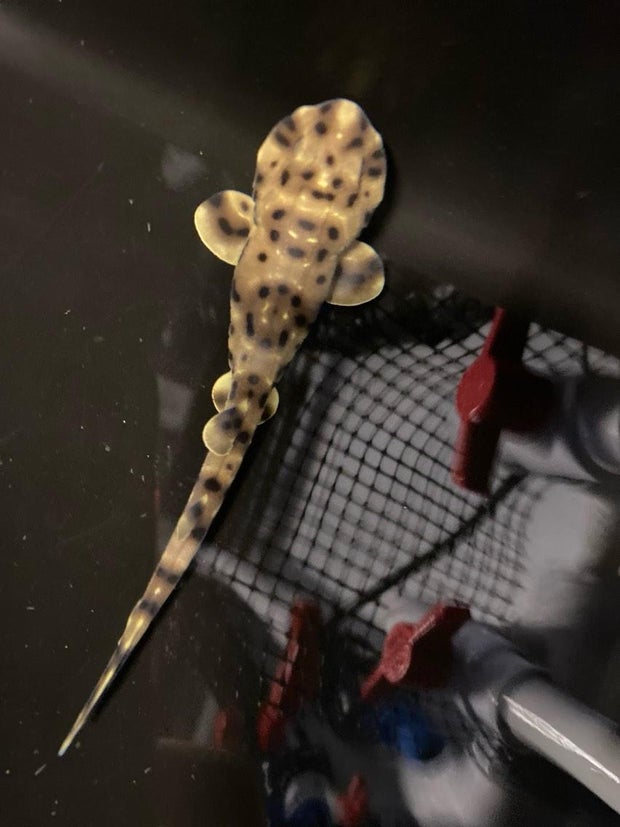A Louisiana aquarium welcomed a baby shark born under mysterious circumstances, the aquarium said Friday.
The swell shark, nicknamed Yoko, hatched on Jan. 3, according to the Shreveport Aquarium. What makes the birth mysterious is that the aquarium is home to two female sharks that haven’t had contact with a male in more than three years.
“This situation is incredible and shows the resilience of this species,” said Greg Barrick, curator of live animals at the Shreveport Aquarium, in a news release.
The egg was first spotted eight months ago, but the aquarium says it may have gone unnoticed in the tank for a month or two. The aquarium will try to determine whether the baby shark was born via parthenogenesis, also called asexual reproduction, or via delayed fertilization. A DNA analysis once the puppy is big enough for a blood sample will provide answers, but will likely take months.
“We are very excited to be able to confirm in the coming months whether this was indeed a case of parthenogenesis or whether it was delayed fertilization,” Barrick said. “It really proves that life…finds a way,” he added, referencing 1993’s “Jurassic Park,” in which Jeff Goldblum says the same thing while discussing how a group of all female dinosaurs could reproduce.
Shreveport Aquarium
While Yoko the shark, currently monitored outside the exhibit, is “thriving,” the aquarium warned that sharks born through rare reproductive events could face significant challenges.
“Even if Yoko’s time with us is short, he will still leave an unforgettable legacy that will provide valuable insights for the study of shark reproduction and conservation efforts,” the aquarium said in a news release.
According to the aquarium, swell sharks are native to the coastal waters of the eastern Pacific Ocean. They are known for their ability to inflate their bodies with water or air to deter predators. Although most shark species produce live young, some species, such as the swell shark, are oviparous, meaning they lay eggs.
Parthenogenesis can occur in sharkslizards and snakes. It can also occur in some species birds.



